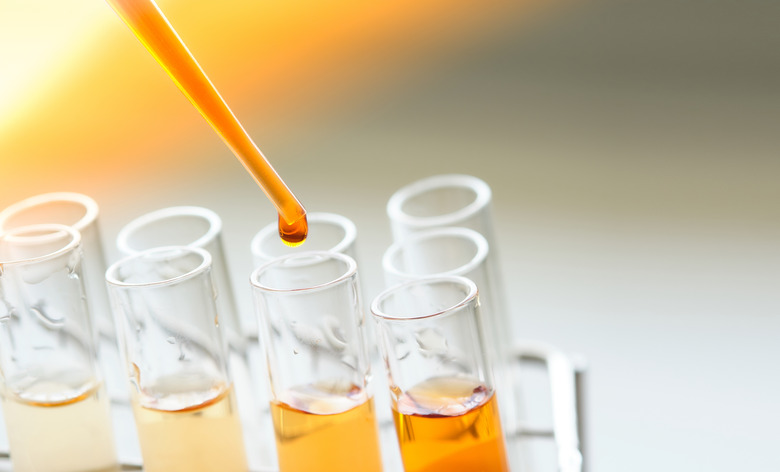How To Find Mole Ratio
In stoichiometry, or the study of relative amounts of substances in reactions, you'll come across two situations that call for the calculation of mole ratio. In one, you're analyzing a mystery substance to determine its empirical formula, and in the other, you're calculating relative amounts of reactants and products in a reaction. In the first case, you usually have to weigh the individual components of a compound and calculate the number of moles of each. In the second case, you can usually find the mole ratio by balancing the equation for the reaction.
Determining Empirical Formula
Determining Empirical Formula
The typical procedure to determine the empirical formula of a mystery compound is to analyze it for its component elements. If you obtain the weight of each element in the compound, you can determine the number of moles of each compound by dividing the actual weight in grams by the atomic weight of that element. To do this, you have to look up the atomic weights in the periodic table or, to make things easier on yourself, you can use an online mole calculator that automatically converts between weight in grams and number of moles.
Once you know the number of moles of each component of the compound, you divide each by the one with the lowest number and round to the nearest integer. The numbers are the mole ratios, and they appear as subscripts in the empirical formula.
Example: You analyze a compound and find that it contains 0.675 g of hydrogen (H), 10.8 g of oxygen (O) and 13.5 g of calcium (Ca). What is the empirical formula?
1. Find the Number of Moles of Each Element
The molar mass of hydrogen is 1 g (rounding to one decimal place), so the number of moles present in the compound is 0.675/1 = 0.675. The molar mass of oxygen is 16 g, and the molar mass of calcium is 40.1 g. Performing the same operation for these elements, you find that the number of moles of each element are:
- H – 0.675
- O – 0.675
- Ca – 0.337
2. Divide the Lowest Number Into the Others
Calcium is the element with the lowest number of moles, which is 0.337. Divide this number into the others to obtain the mole ratio. In this case, it's H – 2, O – 2 and Ca – 1. In other words, for every calcium atom in the compound, there are two hydrogens and two oxygens.
3. Write the Empirical Formula
The numbers derived as the mole ratio of the elements appear in the empirical formula as subscripts. The empirical formula for the compound is CaO2H2, which is usually written Ca (OH)2.
Balancing a Reaction Equation
Balancing a Reaction Equation
If you know the reactants and products of a reaction, you can write an unbalanced equation for the reaction by putting the reactants on one side and the products on the other. The law of conservation of mass requires that both sides of the equation must have the same number of atoms of each element, and this provides the clue on how to find the mole ratio. Multiply each side of the equation by a factor that balances the equation. The multiplication factors appear as coefficients, and these coefficients tell you the mole ratios of each of the compounds in the reaction.
For example, hydrogen and oxygen combine to form water. The unbalanced equation is H2 + O2 –> H2O. However, this equation isn't balanced because there are more oxygen atoms on one side than the other. The balanced equation is 2H2 + O2 –> 2 H2O. It takes two hydrogen atoms for every oxygen atom to produce this reaction, so the mole ratio between hydrogen and oxygen is 2:1. The reaction produces two water molecules, so the mole ratio between oxygen and water is 1:2, but the mole ratio between water and hydrogen is 2:2.
Cite This Article
MLA
Deziel, Chris. "How To Find Mole Ratio" sciencing.com, https://www.sciencing.com/mole-ratio-5534980/. 5 November 2018.
APA
Deziel, Chris. (2018, November 5). How To Find Mole Ratio. sciencing.com. Retrieved from https://www.sciencing.com/mole-ratio-5534980/
Chicago
Deziel, Chris. How To Find Mole Ratio last modified March 24, 2022. https://www.sciencing.com/mole-ratio-5534980/
